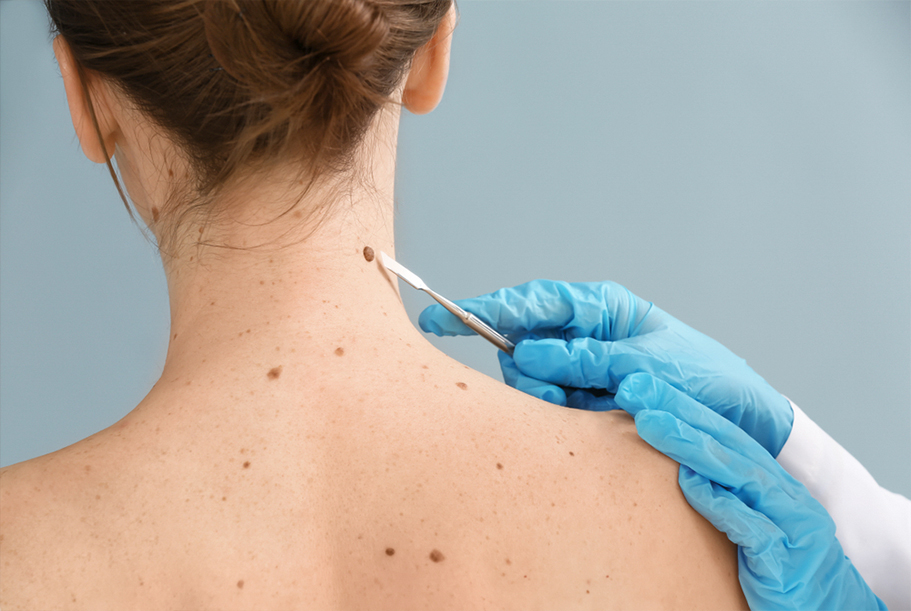Introduction to Chemical Mole Removal
Chemical Mole Removal solutions have become increasingly popular for individuals seeking a non-invasive method to eliminate unwanted moles. These solutions typically involve applying specialized chemicals to the mole, causing it to gradually fade away or fall off. While chemical mole removal offers certain advantages, it's essential to understand both its benefits and drawbacks before opting for this procedure.
Understanding the Process
How Chemical Mole Removal Works
Chemical mole removal works by applying a specific solution directly onto the mole. The solution typically contains ingredients that break down the tissues of the mole, causing it to disintegrate over time. This process is often gradual, requiring multiple applications for complete removal.
Types of Chemical Solutions Used
There are various types of chemical solutions used for mole removal, including acids such as salicylic acid or trichloroacetic acid. These acids work by gradually breaking down the mole tissue, allowing it to slough off naturally.
Pros of Chemical Mole Removal
Effective for Certain Types of Moles
Chemical mole removal is highly effective for certain types of moles, particularly those that are small or superficial. It can be an excellent option for individuals looking to remove moles that are aesthetically displeasing or causing discomfort.
Minimal Scarring
One of the significant advantages of chemical mole removal is that it typically results in minimal scarring compared to surgical methods. Since the process involves gradual dissolution of the mole, the surrounding skin has time to heal, reducing the risk of noticeable scars.
Convenience and Accessibility
Chemical mole removal solutions are readily available over the counter at pharmacies or online. This accessibility makes them a convenient option for individuals who prefer to handle mole removal in the privacy of their own homes.
Cost-Effective Option
Compared to surgical mole removal procedures, chemical solutions are often more affordable. This makes them an attractive option for individuals on a budget who are looking for an effective yet economical way to remove moles.
Cons of Chemical Mole Removal
Risk of Side Effects
Despite its effectiveness, chemical mole removal carries a risk of side effects such as redness, irritation, or burning sensation at the application site. In some cases, individuals may experience allergic reactions or hyperpigmentation.
Not Suitable for All Moles
Chemical mole removal may not be suitable for all types of moles, especially larger or deeply rooted ones. In such cases, surgical removal by a dermatologist may be necessary to ensure complete elimination.
Potential for Incomplete Removal
Due to the gradual nature of chemical mole removal, there's a possibility that the entire mole may not be eliminated with one treatment. Multiple applications may be required, increasing the time and effort involved in the process.
Limited Control Over Depth
Chemical solutions may not penetrate deeply enough to remove moles that extend below the surface of the skin. This limitation can result in incomplete removal or recurrence of the mole in the future.
Comparative Analysis with Other Removal Methods
Chemical vs. Surgical Removal
Compared to surgical mole removal, chemical solutions offer a less invasive alternative with minimal downtime. However, surgical removal provides immediate results and is often preferred for larger or more complex moles.
Chemical vs. Natural Remedies
While natural remedies for mole removal exist, such as apple cider vinegar or garlic paste, they may not be as effective or predictable as chemical solutions. Additionally, natural remedies lack standardized formulations and may carry a higher risk of adverse reactions.
Precautions and Considerations
Consultation with a Dermatologist
Before attempting chemical mole removal, it's essential to consult with a dermatologist to assess the suitability of the procedure for your specific case. A dermatologist can provide personalized recommendations based on your skin type, mole characteristics, and medical history.
Understanding Skin Types and Sensitivities
Individuals with sensitive skin or a history of allergies should exercise caution when using chemical mole removal solutions. Performing a patch test on a small area of skin can help determine any potential adverse reactions before applying the solution to larger areas.
Conclusion
Chemical Mole Removal in Riyadh Solutions offers a convenient and cost-effective option for individuals looking to eliminate unwanted moles. While this method has several advantages, including minimal scarring and accessibility, it's essential to weigh the potential risks and limitations before proceeding. Consulting with a dermatologist can help ensure safe and effective mole removal tailored to your specific needs and preferences.






Comments